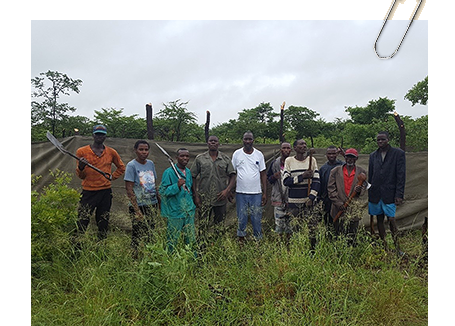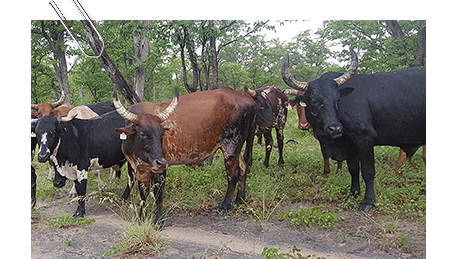Integrating Wildlife Management and Livestock Production through Rangeland Management
Livestock are an integral part of people’s livelihoods in the Zambezi Region. But people do not depend only on livestock – and there are multiple other competing land-uses including, human settlements, forestry, tourism, fishing, wildlife corridors, core wildlife areas, cropping, and hunting, all of which bring benefits as well as competition for scarce and pressured resources.
Dzoti Conservancy intervened to reduce conflicts through a communal integration plan. From April 2017 to April 2019, Dzoti Conservancy and community livestock producers collaborated on a pilot project which integrates wildlife management and livestock production through improving rangeland management practices.
The exploratory phase of the project comprised of a socio-economic survey and an exposure trip to Kenya. The survey revealed insights into the social, environmental and economic situation of farmers. The exposure trip resulted in the inclusion of an abattoir, lodge, campsite, grazing management through movement, herding and kraaling, and CBT approach for local and export markets.
While some farmers moved their cattle upland as per the grazing plan, a considerable number were unable to do so citing lack of access to land, reliable herders, kraals, water, and fear of lions.
Though incidences of livestock/predator conflicts were lower than 2016/2017, it is still early to conclude whether this project directly influenced the reduction of human wildlife conflict incidents.
The pilot project’s main successes are:- The organization of cooperative farmers and their development of a grazing plan with buy-in from multiple stakeholders.
- Stakeholders providing ongoing support of trainings and resources: Directorate of Veterinary Services, Sachinga Livestock Development Centre, and Kwando Carnivore Project.
- The abattoir joint venture business model between the private investor and Dzoti Conservancy, which has the potential of creating additional value-chain economic benefits to the community.
Impact on farmers, grasslands, and movement of wildlife are currently being assessed. Further exposure trips are being planned for to Zimbabwe and Botswana.
To sustain the success of the project (and possible replication elsewhere), community ownership of a highly flexible, integrated rangeland management plan is required, in order to:
- Additionally, strengthening the security of tenure to groups to provide farmers and resource users greater authority over their rangeland resources.
- Grazing plan and regulations
- An abattoir through a joint venture business model
- Improved alignment, joint planning and collaboration with the neighboring community forest
- Sustainable management through capacity building and technical skills development of Dzoti Conservancy’s Management Committee, Livestock Committee, IRDNC staff, and farmers.
- A farmers’ field guide/toolkit.

- Farmers constructing a mobile kraal in Dzoti Conservancy

- Cattle play an important role in rural livelihoods



